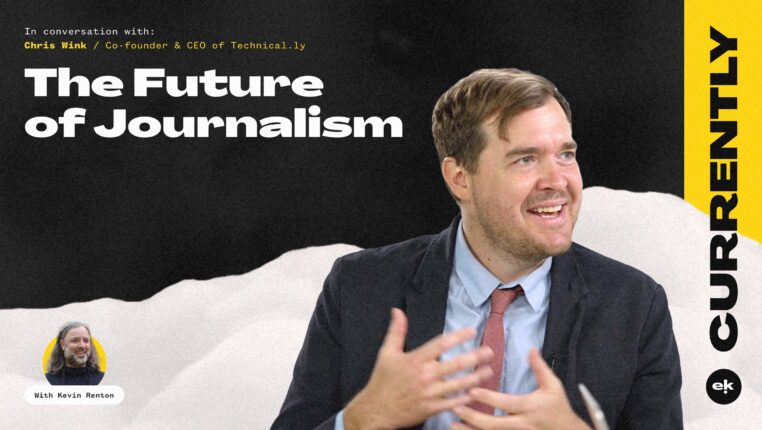Your business is growing, and the team is determined to keep the momentum going. It’s up to you to come up with the next big idea.
Perhaps you’d like to introduce a new service offering, implement a new suite of SAAS apps, or even launch a company-sponsored podcast. We don’t blame you — podcasting has exploded over the past few years and shows no signs of letting up.
- 26% of Americans listen to podcasts monthly
- 75% of listeners take action on a sponsored message
- The average listener completes 90% of a given episode
These numbers alone would make any marketer consider launching a podcast — present company included. But it will take more than just some impressive statistics to get your project off the ground. Before you can get started, you’ll need to justify the investment to the rest of your company’s decision-makers, and to do that you’ll need a business case.
Put in the work, and it will pay off in the end. Truer words have never been spoken in regards to a business case. While tedious and time consuming, a well-crafted business case is your “Golden Ticket” to getting buy-in from decision-makers. Let’s explore what a business case is, why you need one, and when you should get started.
WHAT IS A BUSINESS CASE?
Simply put, a business case presents the justification for undertaking a new project or program. It’s a demonstration of value that seeks to rationalize your preferred solution, while addressing the benefits, costs, and risks of alternative options. Moreover, a business case serves as a reference point for before, after, and during your project that establishes goals, informs and guides progress, and ultimately measures performance.
WHY DO YOU NEED A BUSINESS CASE?
When proposing solutions that involve such constraints as time, cost, and scope, it is imperative that your project is supported by a business case. A business case is developed to:
- Demonstrate that the proposed project or program is serving a business need
- Gain stakeholder alignment on project scope and ultimately decision-maker approval
- Secure the necessary resources to achieve the agreed-upon deliverables
Consider a business case as an enablement tool for decision-makers, providing the rationale for a new project by assessing all relevant economic factors and business implications.
WHEN SHOULD YOU START CRAFTING YOUR BUSINESS CASE?
While it may seem a bit counterintuitive to the purpose of a business case, approval to begin developing a business case is a requirement, and one you’ll be thankful for down the road. Just as a project benefits from a well-conceived business case, the success of your business case hinges on the direction and approval of the Project Sponsor. As mentioned earlier, a business case document is created to support an established business goal and you should only proceed when you’ve achieved team alignment.
Not sure where to start? Our guide below outlines the basics of writing your business case. We’ve also included a free, customizable Business Case Google Doc download that outlines all the information you’ll need.
HOW TO WRITE A BUSINESS CASE
Now, let’s take a look at what you should include:
I. Executive Summary: Provide a compelling and brief summary of your project and your justification. This will be your reader’s first impression, so make it count!
Establish a goal for the project and define expected deliverables.
II. Business Objective: Explain why you want to do this project and how it will support the business strategy. For instance, will this be targeted at acquiring new leads and customers, driving applications, reducing churn of existing customers, or talent acquisition? Explain how this relates to pre-defined organizational goals.
III. Resources & Financials: Show how much investment will be required to get your project up and running. This includes your team’s internal time, software and hardware purchases, advertising, or outside costs such as consultants, vendors, or producers. What type of marketing support is required?
IV. Audience: Who will you target with this project and why will they care? How big is this audience and what, if any, follow up actions do you want them to take? If you have identified target user personas, include that information here.
V. Assumptions & Constraints: List any assumptions or constraints around resources, approvals, workflows, timelines, or potential conflicts here. Identifying and communicating these early will help achieve alignment and streamline the process going forward.
VI. Implementation Strategy & Project Governance: Based on the project goals, audience, and resources, start to scope the project implementation and how you will structure the roles and responsibilities to create and optimize this project. Be sure to include:
Tasks
Identify what needs to be done to effectively manage the creation of all site content and supporting marketing materials. This could include creating an editorial calendar, designing visuals, site development, updating landing pages, writing newsletters, promoting content on social, reaching out to advertisers, etc.Roles and Responsibilities
Who will be working on planning, creating, editing, publishing, and optimizing site content? Once all the tasks above have been identified, assign a person on your team to create, approve, and publish them. If external consultants or freelancers are required, identify them here.Tools & Resources
What is needed to support these activities? For example, if you need a subscription to a cloud hosting provider or software to complete each task, note them here.
VII. Reporting: Define how progress on accomplishing your business objectives will be reported. Identify any target outcomes, the metrics that will be used to measure their success, and any target dates for achievement. A concise progress report template that will be distributed at regular intervals may be helpful.
VIII. Approvals: Identify all relevant stakeholders that will need to buy-in to this project to move forward with the project. List their names and titles, and make sure to leave room for signatures to approve project direction and commencement.
Keep in mind, your business case should evolve with your project. It is a living document that should be reviewed regularly to update your stakeholders, determine project viability, ensure it is meeting your original goals, and analyze whether it’s delivering the intended value.
READY TO GET STARTED?
Now, for the part you’ve been waiting for… our Business Case template is linked below. Feel free to customize it to fit your needs and don’t forget to contact us when you’re ready to begin. We’re excited to talk about your next project!




